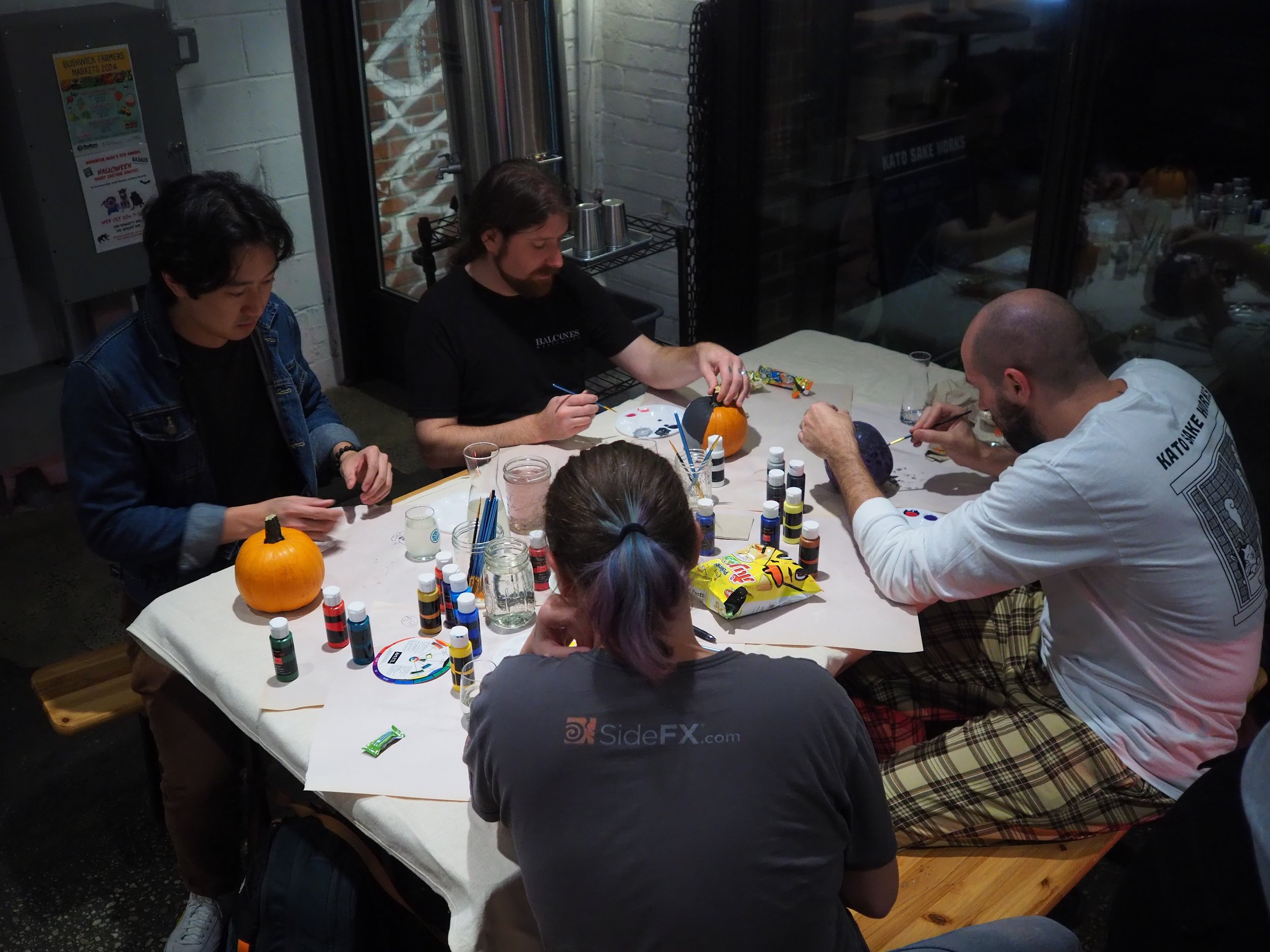SPOOKY SEASON!
HAPPY HALLOWEEEEEN!!! We hope you’re enjoying this perfectly perfect trick-or-treat-or-party kind of weather. We sure are! This year, we brought back our Halloween-wrapped Junmai to participate in the festivities, and it features a litte story that has stuck with us all these years... did you know brewers were accused of being witches many, many years ago?? (queue spooky oooooo sound).
On the more wholesome side of Halloween, we had a very fun pumpkin-painting night at the brewery the other night and wanted to show off the beautiful pumpkins that our guests painted. Moving into the chillier weather, we really enjoyed the cozy arts-and-crafts vibe with a little warm sake, and plan on doing more nights like that in the future... Holiday Bottle Decorating, anyone? Stay tuned on our social media- and we’d love to hear your ideas for other fun events you’d like to see at the brewery.
A PEEK INTO PRODUCTION
We’re always talking about the fun events going on and the sakes we’re drinking in these newsletters, but maybe we could show you a little bit behind the scenes on how our sake is actually made? That is, after-all, a large part of what we do here at the brewery.
We firmly believe that you don’t need to learn about sake in order to enjoy it- it’s our job as brewers to focus on the technical side to the best of our ability, so that all you need to do is pour yourself a glass and have a good time. But, it can be fun to see how things are made and we’d love to share that with you. So, from time to time, we’ll touch on some process here (taking requests if anyone wants to respond to this email with something they’d like to learn about), but also- feel free to just scroll past all this to the comic section below.
Sometimes, people ask us if we make our own koji rice at the brewery. The answer is... drum roll... yes! We don’t grow & harvest the actual koji spores (that’s done in highly controlled facilities that assure the purest koji is produced), but we do inoculate those koji spores on our own rice in a 48-hr fairly involved incubation process. We use a Yellow Koji Spore, called Hikami for Ginjo, in all of the sake we’ve brewed so far. Here are some pictures of the process:
Here’s Maxine wrapping up the Koji into the bundle shown below!
If you’re like- what the heck are we even talking about here? Koji (Aspergillus Oryzae) is our beautiful little domesticated mold that provides the saccharification (breaking down starches into sugars) and liquefaction in the sake brewing process. That’s a fairly high-level description of it, but if you’d like to learn a bit more, please come to one of our Tasting & Tour Programs, we just posted some more open dates with Leah!
IT’S THIS NEWSLETTER’S 4th ANNIVERSARY
Wow, we’ve covered a lot of ground (literally with the expansion) these last few years and it’s been so much fun gathering up the highlights of the month and sharing them with our community. If you’ve been with us since the beginning, you may remember this, but I wanted to share the comic from our very first newsletter. It’s fun to be able to look back and see how far we’ve come (you can find all of our old newsletters here if you’re curious :)... we still use the same labeler, just on a whollllle lot more bottles now.
PS- Maxine (Artist & Brewer) has been painting up a storm these days… keep an eye out on our instagram for an exciting event coming up!











